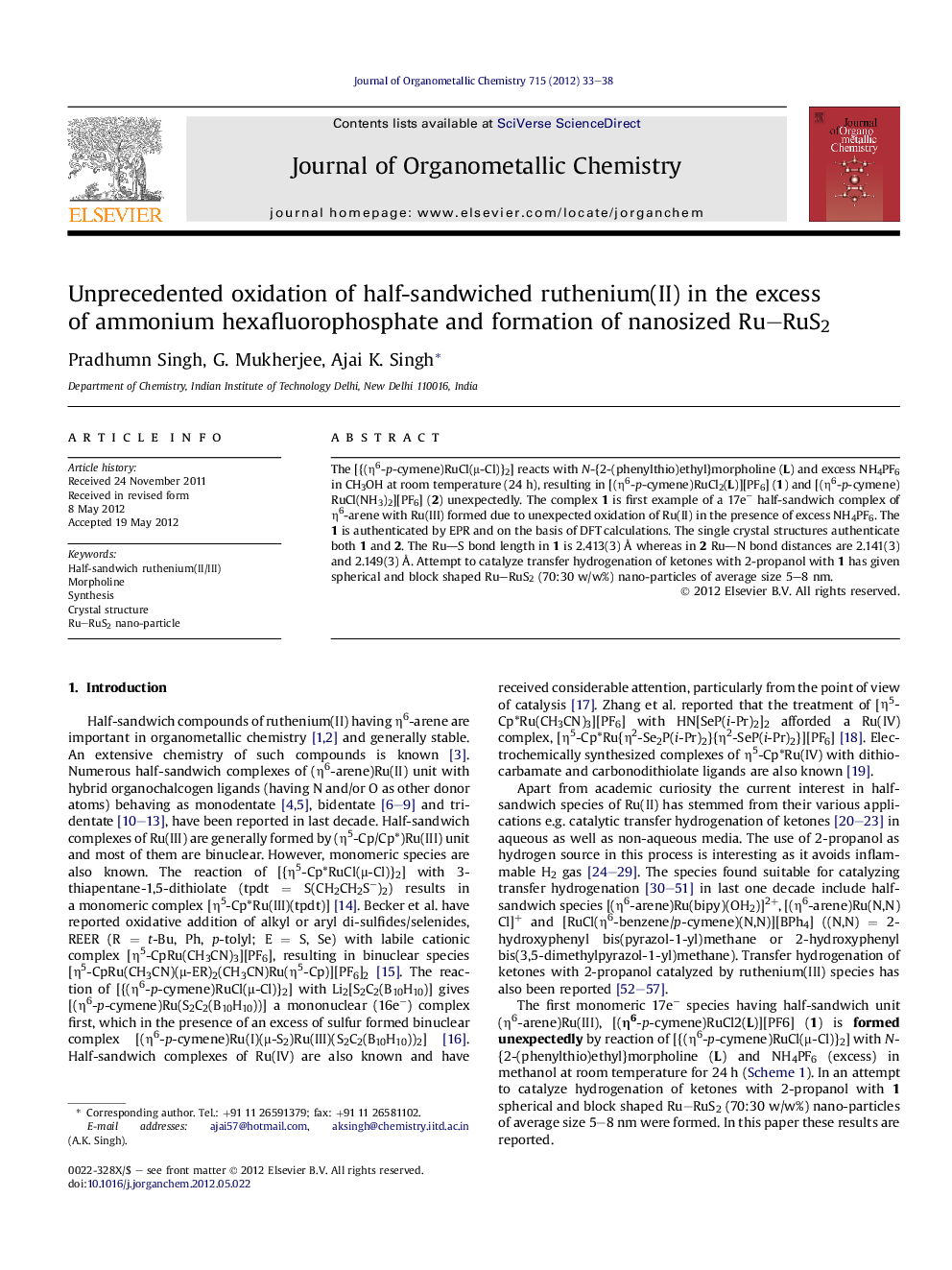| Article ID | Journal | Published Year | Pages | File Type |
|---|---|---|---|---|
| 1324033 | Journal of Organometallic Chemistry | 2012 | 6 Pages |
The [{(η6-p-cymene)RuCl(μ-Cl)}2] reacts with N-{2-(phenylthio)ethyl}morpholine (L) and excess NH4PF6 in CH3OH at room temperature (24 h), resulting in [(η6-p-cymene)RuCl2(L)][PF6] (1) and [(η6-p-cymene)RuCl(NH3)2][PF6] (2) unexpectedly. The complex 1 is first example of a 17e− half-sandwich complex of η6-arene with Ru(III) formed due to unexpected oxidation of Ru(II) in the presence of excess NH4PF6. The 1 is authenticated by EPR and on the basis of DFT calculations. The single crystal structures authenticate both 1 and 2. The Ru—S bond length in 1 is 2.413(3) Å whereas in 2 Ru—N bond distances are 2.141(3) and 2.149(3) Å. Attempt to catalyze transfer hydrogenation of ketones with 2-propanol with 1 has given spherical and block shaped Ru–RuS2 (70:30 w/w%) nano-particles of average size 5–8 nm.
Graphical abstractThe 17e− complex [(η6-p-cymene)RuCl2(L)][PF6] (1) has been formed via oxidation of Ru(II) in the presence of excess NH4PF6. The single crystal structures of 1and [(η6-p-cymene)RuCl(NH3)2][PF6] (2)have been solved. Attempted catalyses of transfer hydrogenation with 1 has resulted in Ru–RuS2 NPs of size 5–8 nm.Figure optionsDownload full-size imageDownload as PowerPoint slideHighlights► [(η6-p-cymene)RuCl2(L)][PF6] (1) formed in the presence of excess NH4PF6 in MeOH. ► 1 characterized by single crystal structure. ► Attempted catalysis by 1 of transfer hydrogenation of ketones. ► Ru–RuS2 (70:30 w/w%) nano-particles of average size 5–8 nm.
